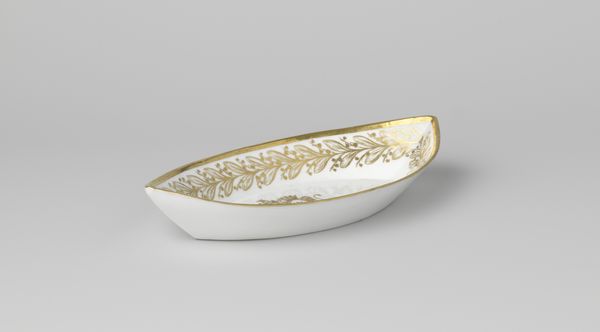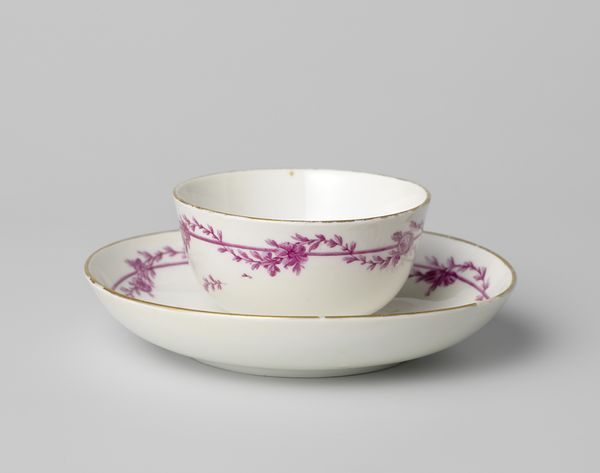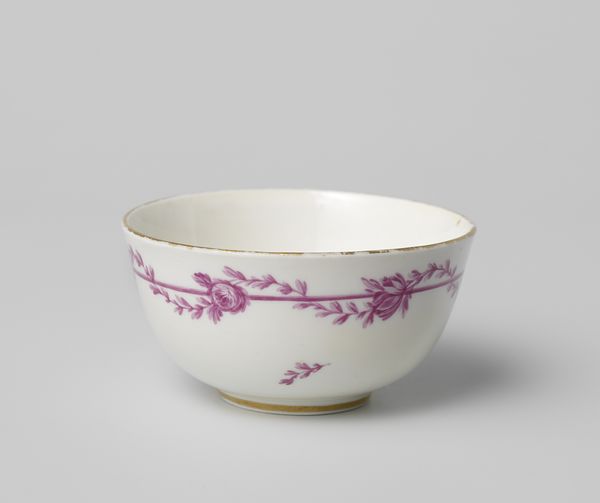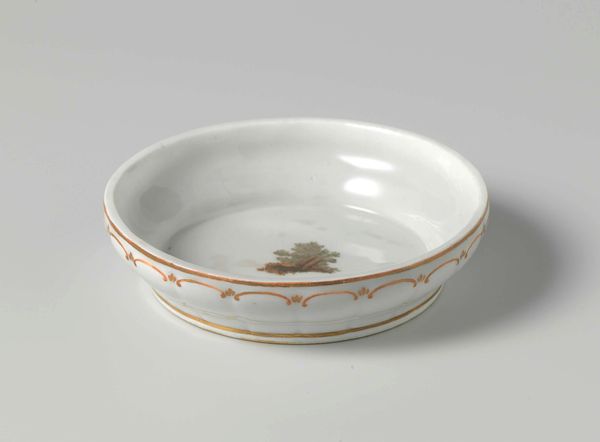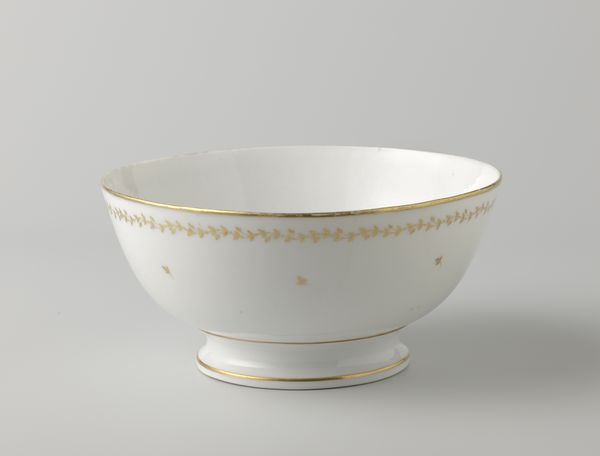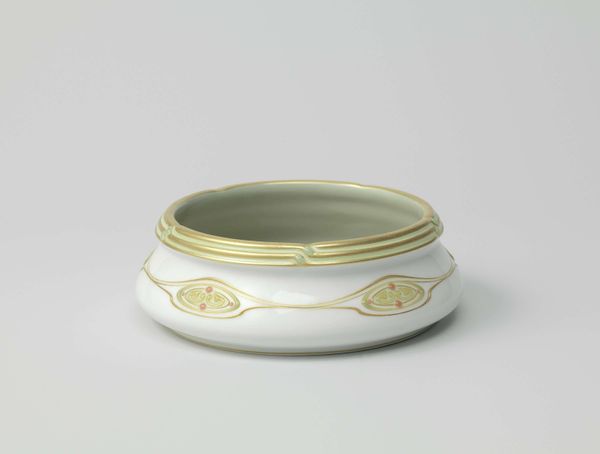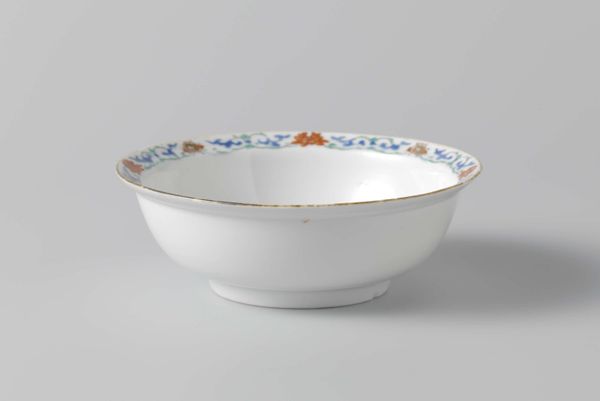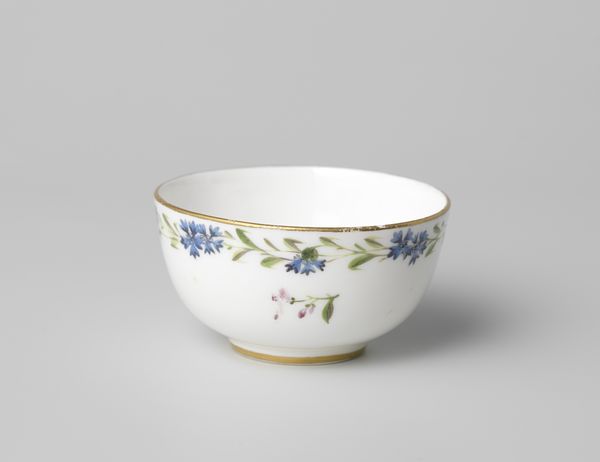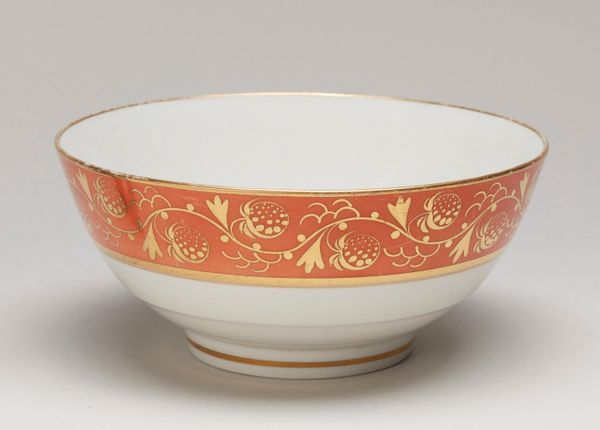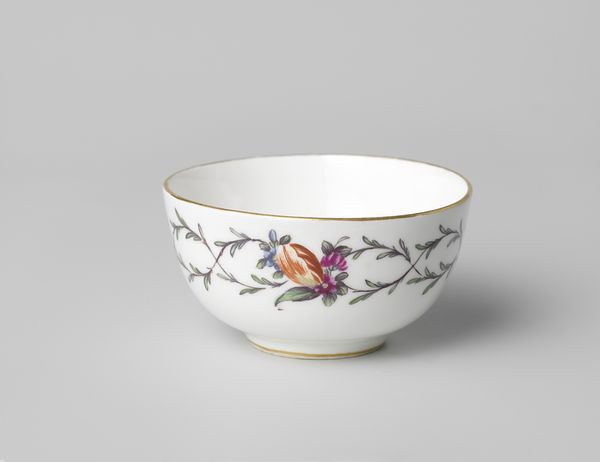
Dimensions: height 1.7 cm, diameter 9.8 cm, diameter 8.7 cm
Copyright: Rijks Museum: Open Domain
These three flowerpot containers were produced by the Loosdrecht porcelain factory in the Netherlands. During the eighteenth century, porcelain wasn't just about function; it was a potent symbol of status and wealth. Owning decorative items like these cache-pots signaled one’s participation in elite social circles. Think about how objects like these shaped conversations around taste, class, and cultural capital. Porcelain production itself was deeply embedded in global trade networks, connecting Europe to Asia through colonial routes. Consider how these refined, delicate objects might have been used in carefully curated domestic spaces. They reflect a society where displaying cultivated nature indoors became fashionable. The stands provided not just utility, but a platform to elevate nature, creating an experience that linked domestic life with broader social aspirations. It's a reminder of how everyday objects can carry layers of historical meaning and social identity.

